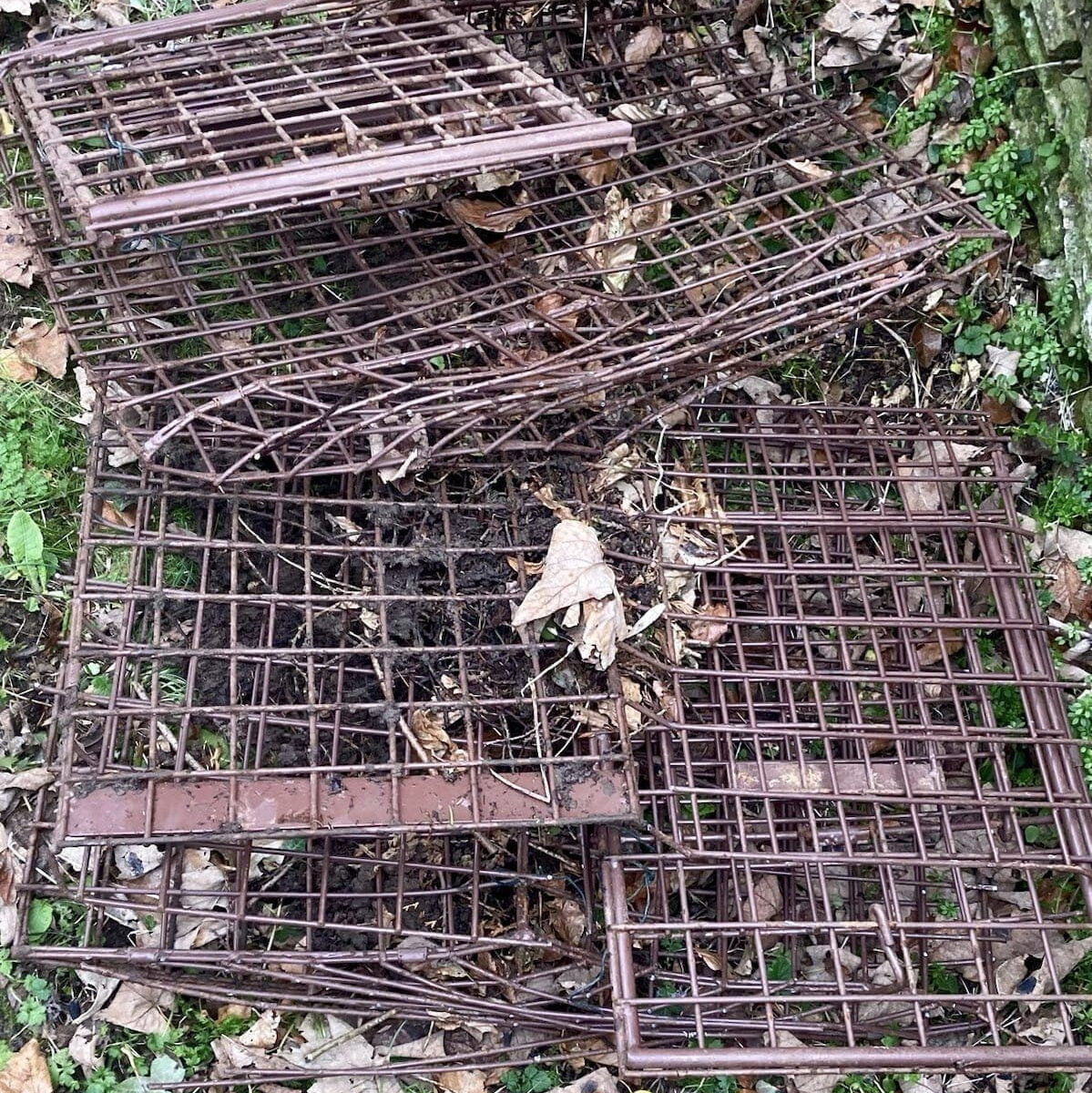[Image credit: @severnvalesabs]
The main hunting season has passed the half-way point and many are starting to feel it drag on. But groups remain active. Some have even visited two hunts in one day, as seen by Glasgow Hunt Sabs and, separately, Staffordshire Hunt Sabs. Though there was plenty of success with disrupting the efforts to kill wildlife, some sabotage groups were on the receiving end of violence. Northants Hunt Sabs were attacked two weeks in a row and then had their windscreen smashed the following week, all during meets of the Cottesmore Hunt. In a statement, they claimed this was a result of continued pressure put on the hunt that they described as ‘wounded’. Behaviour such as this is a sure sign of desperation and has been carried out in a similar way by many hunts that have folded in the past. They later stated; ‘no matter what they throw at us they should always expect us’.
South Coast Hunt Sabs were also assaulted and had a vehicle smashed on New Year’s by the South Down & Eridge with East Sussex & Romney Marsh, who recently amalgamated. Historically, both of these hunts have a reputation for violence and is likely to continue. Be this as it may, the development is big news. They are also advertising for a new huntsman, which suggests things aren’t going well. Last year saw an amalgamation in Kent, resulting in the large county only have one fox hunt left. With both of these developments in mind, this means that hunt sabotage groups in the South East of England now have fewer to contend with, giving them the opportunity to concentrate efforts and shut down those left remaining for good.
It was reported that, despite the best efforts of Plymouth and West Devon Hunt Sabs, The Lamerton Hunt killed a fox whilst hunting Dartmoor National Park. The actions of the hunt just a week earlier resulted in the death of two hounds who were run over on a public road. Like wildlife, hounds are treated as a commodity with little to no regard for their safety or wellbeing. As hunts continue to breed thousands of hounds a year, they subsequently create more life that is subject to suffering. An end to hunting not only means less suffering for wildlife, but also an end to an animal industry.
In December, North Dorset Hunt Sabs used a drone to capture video footage of the Blackmore & Sparkford Vale hunting and killing a fox, which was later broadcast on national TV on Channel 4 News in January. This evidence, aided by receiving mainstream coverage, has forced the governing body of fox hunting to suspend the hunt. Though this response by the governing body is purely to save face, the hunt is unable to continue for the foreseeable future which is undoubtably good for local wildlife but also means that the hunt will take a financial hit from the lack of income generated by mounted hunt supporters who pay to participate. This is one example of how utilising opportunities to show the realities of hunting through mainstream media has played an important part in sustaining public outrage and maintaining pressure against individual hunts as well as hunting in general.
Drones has become more of a regular piece equipment in the sabotaging toolkit, as seen by Cumbria and Lancashire Hunt Sabs who focus their efforts on fell packs; non-mounted fox hunts. With having to operate in challenging vast rugged terrain, drones help to locate and gather evidence of hunts who are increasingly having to rely on trespassing to hunt. It was reported that this includes land owned by the National Trust, Forestry England, Lake District National Park Authority, United Utilities, Cumbria Wildlife Trust, Woodland Trust, and Butterfly Conservation, as well as areas that have status of being a Site of Special Scientific Interest. The sabotage group also state that a growing network of landowners has formed to tackle hunt trespass on their land, adding pressure from the local community against a form of hunting that is already depleting in support. Pressure from local and large landowners could be enough to cause for dwindling hunts to disband. Sabotage helps to make that happen sooner.
The intensive badger cull may have finished months ago but supplementary culling has continued. Though shooting free roaming badgers at night continued until February, regulations stipulate that cage-trapping should cease on the 1st December. Be that as it may, some involved in culling leave their killing mechanisms laying around. Severn Vale Hunt Sabs came across some and made sure they can no longer trap again, and reaffirms the importance of checking up on badger setts, especially that have previously been targeted. Northamptonshire Badger Group, for example, have been busy checking setts and used this to train others, which emboldens locals to take action where necessary and doubles up as a wholesome activity in appreciating the activity of wildlife.
NO LIFE LIKE THE WILD


